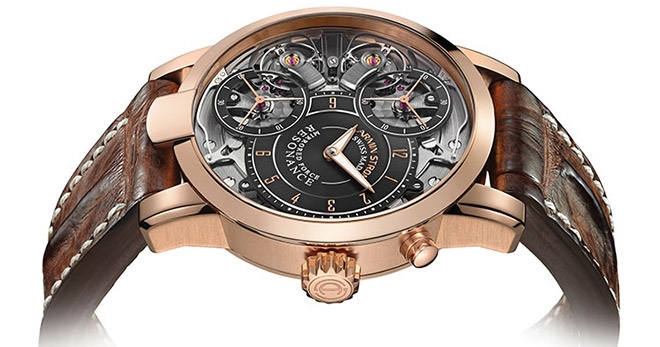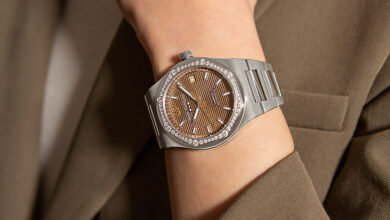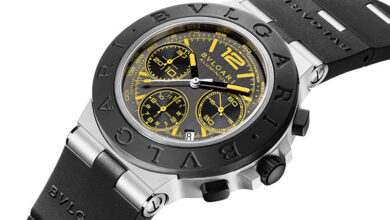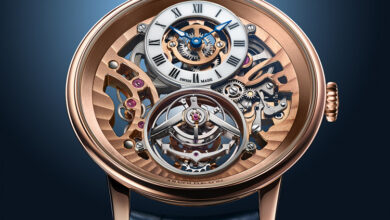ARMIN STROM’s historic Mirrored Force Resonance

ARMIN STROM propels the concept of Resonance firmly into the 21st century with watchmaking breakthrough by debuting Mirrored Force Resonance
Two oscillating bodies in close proximity influence each other and eventually synchronise; this is a phenomenon of physics known as resonance. ARMIN STROM has now launched the Mirrored Force Resonance, a resonating dual regulator developed for maximum precision with its whole captivating mechanism on full display dial side.
Resonance is a sophisticated and demanding horological technique that has rarely been attempted, let alone mastered. In the pursuit of horological accuracy, precision, and rate stability, resonance has generally involved utilising two independent mainsprings, gear trains, escapements, and balances – each connected by a rack and pinion to allow fine tuning of the distance between them. Precise adjustment of the distance between the two regulators is necessary to incite resonance, which sees the two balances finding a concurrent rhythm in opposite directions so as to continuously average out errors for maximum accuracy.
One body in motion relays its vibrations to its surroundings. When another body with a similar natural resonant frequency to the first receives these vibrations, it will absorb energy from the first and start vibrating at the same frequency in a sympathetic manner. The first body acts as the “exciter,” while the second acts as the “resonator.”
The phenomenon of synchronised motion in horology has fascinated watchmakers since the time of Christiaan Huygens (1629-1695). Huygens, inventor of the pendulum clock, was the first to discover the resonance of two separate pendulum clocks, which logically should keep slightly different time.
When hung from a common beam, however, the pendulums of the adjacent clocks synchronised; subsequent researchers confirmed this. In the eighteenth century, Abraham-Louis Breguet demonstrated his double pendulum resonance clock.
Resonance has three-fold advantages: A stabilising effect on timekeeping; a conservation of energy; and a reduction of negative effects on timekeeping accuracy due to outside perturbation such as shock to the balance staff, which in turn keeps the rate more stable and increases precision.
An outside shock that slows one of the balances down increases the speed of the other one by the same amount; both balances will strive to get back in resonance, thereby averaging and minimising the effects of the outside influence as they find their rhythm.
The resonant Caliber ARF15 is a classically constructed manually wound movement that was conceived, manufactured, assembled, and regulated in-house. It beats at a 3.5 Hertz (25,200 vph) frequency.
The Resonance premiered at London’s SalonQP in November 2016, following which it will be exhibited across the globe before returning to Switzerland.
The watch case is of 18kt rose gold with sapphire crystal and a case back with antireflective treatment. With a diameter of 43.40 MM, and a height of 13.00 MM, the timepiece is water resistant to 50 M. A limited edition of 50 pieces, the watch retails at CHF 67,000.








